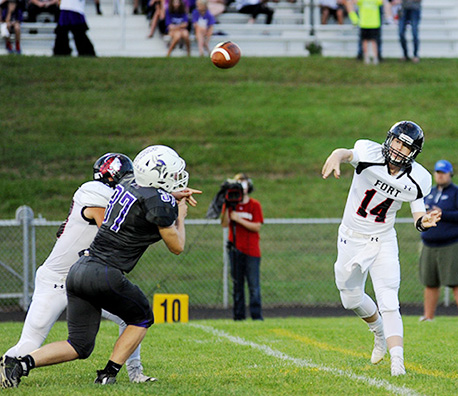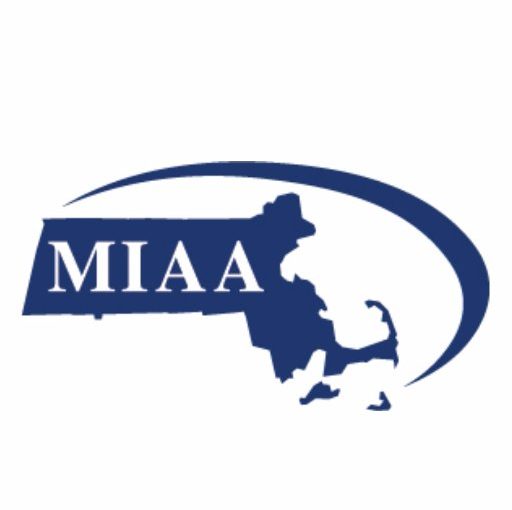How heat acclimatization guidelines have made a difference
In 2009, the National Athletic Trainers’ Association (NATA) and Korey Stringer Institute (KSI) spearheaded a task force that developed the Preseason Heat-Acclimatization Guidelines for Secondary School Athletics.
David Csillan, a NATA member who co-chaired the report with Douglas J. Casa of KSI, said these guidelines were vital. Most secondary school athletes spend their summers in climate-controlled environments, playing video games or watching television. They then arrive at August preseason camp out of shape and unprepared for the heat.
 “Incorporating the heat acclimatization guidelines ensures the safest transition into physical activity for these individuals,” he said. “We have worked hard to educate the public about exertional heat stroke, but there is still a long road ahead. With the help from the media, many athletes and coaches are now better aware of the dangers of exertional heat stroke.”
“Incorporating the heat acclimatization guidelines ensures the safest transition into physical activity for these individuals,” he said. “We have worked hard to educate the public about exertional heat stroke, but there is still a long road ahead. With the help from the media, many athletes and coaches are now better aware of the dangers of exertional heat stroke.”
According to a KSI report, 16 states have implemented the heat acclimatization guidelines, though 34 states total have adopted some variation of the guidelines. Eighteen do not meet the minimum standards as originally established almost a decade ago.
NATA data revealed that from 1980 through 2015, 44 secondary school football players nationwide died during preseason practices due to exertional heat stroke (EHS). In the 16 states that implemented acclimatization guidelines, one player has died since the safety measures were put in place. That death resulted from a program failing to follow the guidelines.
Rebecca L. Stearns, PhD, ATC, chief operating officer at KSI, said EHS is among the leading causes of sudden death during sport and physical activity. Research has shown it’s 100 percent survivable when rapidly recognized and treated.
“Establishing policies to address issues related to the prevention and treatment of EHS, including heat acclimatization, environment-based activity modification, body temperature assessment using rectal thermometry, and immediate, onsite treatment using cold-water immersion attenuates the risk of EHS mortality and morbidity,” she said.
Defining heat
Some coaches, athletes and parents rely on misconceptions about exercising excessive heat. Perhaps the biggest misconception is associating hot weather with 100-degree temperatures. A hot environment is relative to the geographical area. For example, an ambient temperature in the high 80s for the northeastern United States may affect athletes the same as temperatures reaching 100 degrees in the Southwest.
Many athletic programs use heat indexes as their guide for physical activity. However, heat index is a measurement of ambient temperatures and relative humidity while resting in the shade. It was intended to provide outdoor restrictions for the elderly and adolescents during times of elevated temperatures and is not relevant to an athletic practice setting.
The Wet Bulb Globe Temperature (WBGT) is a measurement of ambient temperature, relative humidity, radiant heat from the sun and wind speed. These four factors affect efficient cooling through the body’s sweat mechanism. When outdoor activities are conducted in the direct sun, the WBGT is the most pertinent to use.
Thoughts from the fields
Not only does it diminish the risk of death, but Csillan said that coaches following the guidelines say they’ve seen a decrease in overall injuries and an increase in player output. After all, when athletes aren’t fatigued, they don’t fall victim to poor technique, which can lead to injury.
Tommy Whittle, associate director with the Georgia High School Association, said player safety has always been important to the state’s coaches, and the guidelines are working as they should.
“There was some resistance in the beginning about it ‘not the way they have always done it,’ but over time I hear very little, because coaches know it’s for the good of the athletes and their teams,” he said. “Most of our schools or county school systems have trainers and they turn it over to them. Those that don’t have trainers usually designate a coach to handle the Wet Bulb readings, and in both cases the head coach follows the lead of the designee.”
 Dave Nash, a football coach with the Savannah Country Day Hornets in Georgia, said the coaching staff has a trainer who uses a heat bulb and weather app that sends a text to the team when the temperatures get too high. Practices are adjusted based on the heat index and humidity.
Dave Nash, a football coach with the Savannah Country Day Hornets in Georgia, said the coaching staff has a trainer who uses a heat bulb and weather app that sends a text to the team when the temperatures get too high. Practices are adjusted based on the heat index and humidity.
“We missed a lot of practice time last year because of our precautions, but their lives are much more important than a game,” he said. “We are all on the same page because the safety of our players comes first.”
In 2018, the Florida High School Athletic Association made a rule requiring all member school head coaches and student-athletes to complete the NFHS’s “Heat Illness Prevention” online course in an effort to maximize best practices.
“The feedback has been great, but both the coaches and the association agree education and modification is the key to everything,” said FHSAA public relations specialist Kyle Niblett. “There are a lot of schools that have things such as cold water immersion tubs, but if a coach is not educated on how to use them or the importance of it, it does no good. We’re constantly reminding coaches that modifying practice due to heat is not a matter of convenience; it’s a matter of safety.”
Stearns said the NCAA has seen a seven-fold reduction in the number of preseason EHS deaths since the heat acclimatization guidelines were implemented, with a similar reduction at the high school level.
Looking head
Today, NATA stands by its guidelines and feels no changes are necessary, though adjustments could be made in accordance to with climate changes.
“The purpose isn’t to decrease activity time, but to provide modifications that allow for safe participation,” Csillan said. “The data clearly shows that catastrophic events resulting from exertional heat stroke continue to be present in those schools neglecting to adopt the heat acclimatization guidelines as a minimum best practice.”
With approximately eight million students participating in high school sports across the country, both parents and athletes expect health and safety to be held in the highest regard. Therefore, a full-time athletic trainer who is tasked with adhering to the guidelines should be a priority in every school community.
Understanding heat-acclimatization guidelines
“The most important takeaway for coaches is to understand the acclimatization guidelines are not specific to football,” said David Csillan, a member of the National Athletic Trainers’ Association. “While most heat-related injuries occur during football, exertional heat stroke is non-discriminatory. It can occur regardless of male/female, football/field hockey, freshman/varsity and indoors/outdoors.”
Here are some critical guidelines on heat acclimatization:
- During the first five days of the acclimatization process, athletes may not participate in more than one practice per day. And practices should not exceed one hour.
- A one-hour maximum walk-through is permitted the first five days. However, a three-hour recovery period should be inserted between practices and walk-throughs.
- During the first two days with sports requiring helmets or shoulder pads, a helmet should be the only protective equipment permitted (includes field hockey goalie). During days three to five, only helmets and shoulder pads should be worn. Beginning day six, all protective equipment can be worn and full contact can begin.
- Beginning no earlier than day six and continuing to day 14, double-practice days must be followed by a single-practice day. On single-practice days, one walk-through is permitted but must be separated by three hours of rest.
- When a double-practice day is followed by a rest day, another double-practice day is permitted after the rest day. On a double-practice day, neither practice should exceed three hours with no more than five hours of practice in one day.
- It’s recommended that an athletic trainer be present before, during and after all practices.
To learn more on heat acclimatization guidelines and keeping athletes safe, visit www.nata.org.





